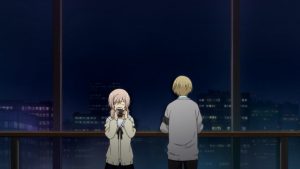 And so ReLIFE comes to a close – a bit more hastily than one might have hoped, perhaps, but ultimately in quite satisfying fashion. It’s fair to say I was more or less expecting a happy ending here, but I confess there was a moment when I flicked the mouse just so I could see the slider and make sure the credits were rolling early. This is kind of a fairy tale story, albeit a quintessentially modern one, so it’s only fitting that it gets a “and they lived happily ever after” ending.
And so ReLIFE comes to a close – a bit more hastily than one might have hoped, perhaps, but ultimately in quite satisfying fashion. It’s fair to say I was more or less expecting a happy ending here, but I confess there was a moment when I flicked the mouse just so I could see the slider and make sure the credits were rolling early. This is kind of a fairy tale story, albeit a quintessentially modern one, so it’s only fitting that it gets a “and they lived happily ever after” ending.
 On balance, I find myself wishing the- well, balance had been a bit different. That is to say, if ReLIFE was going to get 17 total episodes, I think 13 was too much for what went on in the TV series and 4 too few for what went on in the specials. It’s not too surprising that it ended up that way, as anime about high school are certainly easier to sell to a production committee than ones about struggling salarymen, but as good as the series was I think there were a couple episodes that were fluff (namely during the Kariu drama), and the story of Arata and Chizuru dealing with their post-ReLIFE could certainly have supported more detail (as indeed it did in the manga).
On balance, I find myself wishing the- well, balance had been a bit different. That is to say, if ReLIFE was going to get 17 total episodes, I think 13 was too much for what went on in the TV series and 4 too few for what went on in the specials. It’s not too surprising that it ended up that way, as anime about high school are certainly easier to sell to a production committee than ones about struggling salarymen, but as good as the series was I think there were a couple episodes that were fluff (namely during the Kariu drama), and the story of Arata and Chizuru dealing with their post-ReLIFE could certainly have supported more detail (as indeed it did in the manga).
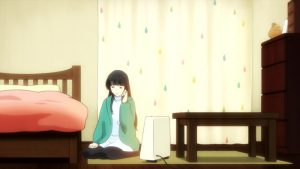 I wouldn’t say there was anything about this ending that surprised me too much, but ReLIFE is the sort of series where I didn’t want to be surprised much by the ending. One of the saddest parts for me, honestly, was Arata busting his ass to pass the entrance exam, but not being able to actually go on to college with the friends he’d made. There’s a clear message here that we don’t appreciate the freedom and possibility of youth nearly enough, but this really hammers it home – when the morning comes he has to go back to living his real life. Yeah you can drink and smoke legally, but seriously children – you have no idea what you’re getting yourselves into.
I wouldn’t say there was anything about this ending that surprised me too much, but ReLIFE is the sort of series where I didn’t want to be surprised much by the ending. One of the saddest parts for me, honestly, was Arata busting his ass to pass the entrance exam, but not being able to actually go on to college with the friends he’d made. There’s a clear message here that we don’t appreciate the freedom and possibility of youth nearly enough, but this really hammers it home – when the morning comes he has to go back to living his real life. Yeah you can drink and smoke legally, but seriously children – you have no idea what you’re getting yourselves into.
 Ultimately of course this story comes down to Chizuru and Arata, and what they’re giving up when they swallow that little pill. Chizuru does try and game the system – she writes “I was in love with Kaizaki Arata” on her palm before she takes the pill. But she’s careless, and Onoya-san (who right up the end was the most annoying element of this series for me) sees the evidence. She does what she has to do, though it’s very clear she’d much rather Chizuru had done a better job hiding her crime (it’s almost as if she wanted to be caught).
Ultimately of course this story comes down to Chizuru and Arata, and what they’re giving up when they swallow that little pill. Chizuru does try and game the system – she writes “I was in love with Kaizaki Arata” on her palm before she takes the pill. But she’s careless, and Onoya-san (who right up the end was the most annoying element of this series for me) sees the evidence. She does what she has to do, though it’s very clear she’d much rather Chizuru had done a better job hiding her crime (it’s almost as if she wanted to be caught).
 Fortunately for Arata and Chizuru, both An and Yoake-san are their allies in all this. They’re not going to risk everything by violating the rules and spilling the beans, but when Arata decides to wants to start working for ReLIFE rather than accept one of the offers they procured for him elsewhere, one or both of An and Ryou clearly see this as an opportunity (as we’ll find out in a bit). Arata wanting to work for ReLIFE is very much in character – he’s a pay it forward kind of guy, and even without Chizuru he remembers the experience as a game-changer for the better. I especially liked that the first person he recruited for the program was Ooga’s hikikomori brother (a development which, if I’m not mistaken, became the focus of a spinoff manga).
Fortunately for Arata and Chizuru, both An and Yoake-san are their allies in all this. They’re not going to risk everything by violating the rules and spilling the beans, but when Arata decides to wants to start working for ReLIFE rather than accept one of the offers they procured for him elsewhere, one or both of An and Ryou clearly see this as an opportunity (as we’ll find out in a bit). Arata wanting to work for ReLIFE is very much in character – he’s a pay it forward kind of guy, and even without Chizuru he remembers the experience as a game-changer for the better. I especially liked that the first person he recruited for the program was Ooga’s hikikomori brother (a development which, if I’m not mistaken, became the focus of a spinoff manga).
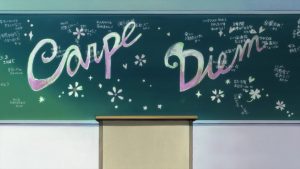 When Arata goes to an enkai for new hires (it’s hard to overstate how important and ritualistic these office drink parties are in Japanese professional life, and arriving late is a massive faux pas), he meets a young woman there – a woman we know, of course. There’s something about her phone strap that strikes him as odd, as it matches one of his own that he doesn’t remember buying during his ReLIFE. But it’s after the party, when the sempai have gone off to the nijikai (where the real drinking takes place), when the real drama happens. Chizuru has overheard one of the sempai mention that Arata was a test subject himself, and that immediately gives them something in common (even if they have no idea at first just how much).
When Arata goes to an enkai for new hires (it’s hard to overstate how important and ritualistic these office drink parties are in Japanese professional life, and arriving late is a massive faux pas), he meets a young woman there – a woman we know, of course. There’s something about her phone strap that strikes him as odd, as it matches one of his own that he doesn’t remember buying during his ReLIFE. But it’s after the party, when the sempai have gone off to the nijikai (where the real drinking takes place), when the real drama happens. Chizuru has overheard one of the sempai mention that Arata was a test subject himself, and that immediately gives them something in common (even if they have no idea at first just how much).
 The way I interpret this is that once Arata decided to work for ReLIFE, Onoya and/or Ryou pushed for Chizuru to do the same hoping for exactly what happened. I mean, she does say flat out that her support “really pushed for it” – and that seems like the most likely reason, since if the two re-discover each other organically, they can’t be blamed for it happening. And honestly, this ending would have sucked pretty hard if the two of them hadn’t ended up together. Normally the “everybody wins” scenario in endings tends to rub me the wrong way, but in this case I think it was more or less earned and a natural progression of the story.
The way I interpret this is that once Arata decided to work for ReLIFE, Onoya and/or Ryou pushed for Chizuru to do the same hoping for exactly what happened. I mean, she does say flat out that her support “really pushed for it” – and that seems like the most likely reason, since if the two re-discover each other organically, they can’t be blamed for it happening. And honestly, this ending would have sucked pretty hard if the two of them hadn’t ended up together. Normally the “everybody wins” scenario in endings tends to rub me the wrong way, but in this case I think it was more or less earned and a natural progression of the story.
 ReLIFE was a series that was never helped by the distribution model, at least for me – the full-series dump followed by the much-later special episodes wouldn’t have been my choice. Still, I think the series largely succeeded at doing what it set out to do – tell a compelling story about two broken but decent young adults getting a second chance and falling in love. As much suspension of disbelief as the premise required (a lot), in dramatic terms I think it’s actually rather brilliant – what a vehicle for a romantic tale it is, and ReLIFE took full advantage of it. It ends up being a little under the radar, but this series will go down as one of the more engaging romance anime of the past few years and I’m glad to have experienced it.
ReLIFE was a series that was never helped by the distribution model, at least for me – the full-series dump followed by the much-later special episodes wouldn’t have been my choice. Still, I think the series largely succeeded at doing what it set out to do – tell a compelling story about two broken but decent young adults getting a second chance and falling in love. As much suspension of disbelief as the premise required (a lot), in dramatic terms I think it’s actually rather brilliant – what a vehicle for a romantic tale it is, and ReLIFE took full advantage of it. It ends up being a little under the radar, but this series will go down as one of the more engaging romance anime of the past few years and I’m glad to have experienced it.


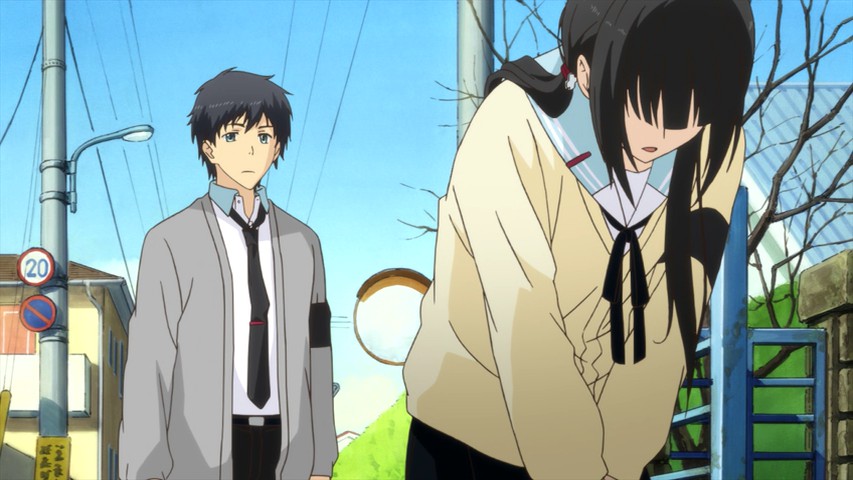
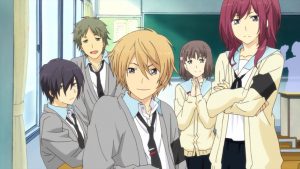
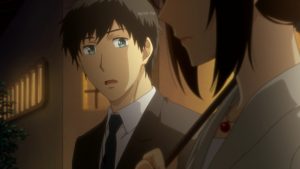




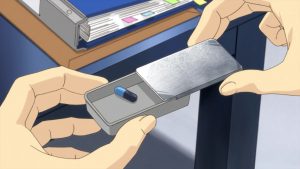
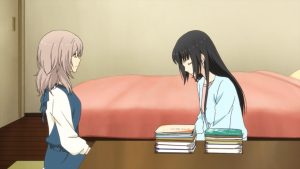
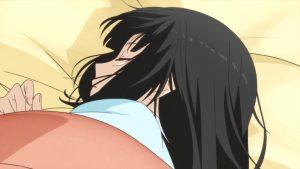





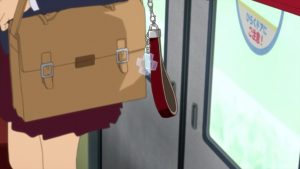
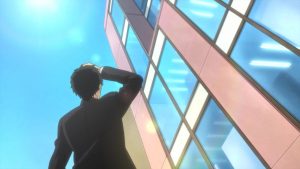



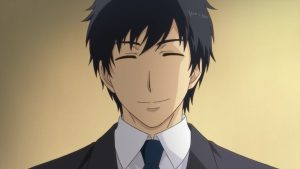



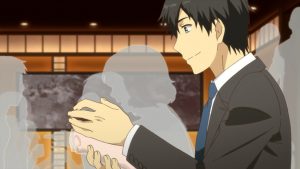





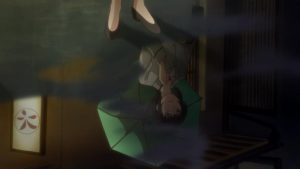
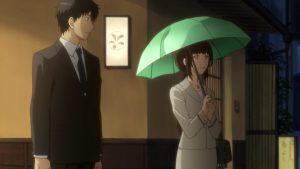

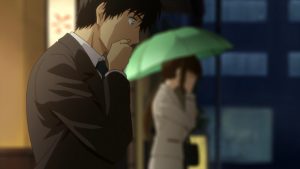

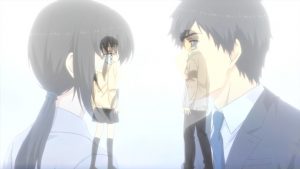

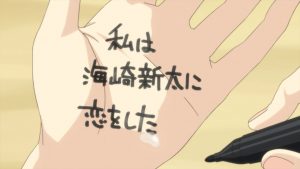
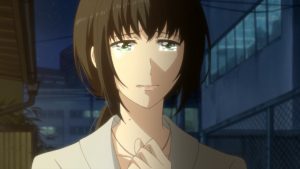


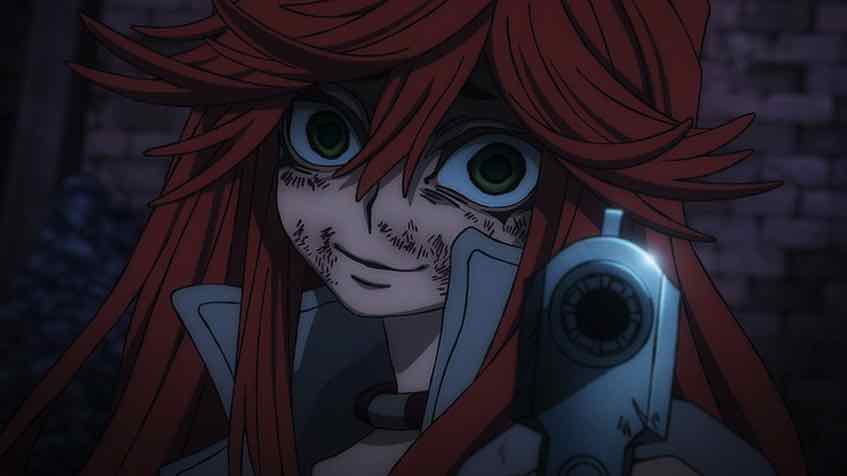
RandomDood
December 9, 2018 at 7:08 amThey excluded some stuff in the epilogue post enkai(the park scene), but for the most part the ending was done well.
Guardian Enzo
December 9, 2018 at 10:40 amOh, they excluded a lot of stuff from these 3 episodes. In truth in a perfect world the TV would have been about 10 eps and Kanketsu should have had maybe 7. But that said, they still did a good job with it.